Want to step away from the norm? How about spending the morning with 23,500 sunflower plants that equate to about one million sunflowers? Summer breezes, morning skies, busy bees danced across seed-filled pallets of sunflowers. Last weekend, I had a short window of time to escape in Northern Michigan at Send's Sunflower Farm. Where to begin when looking over a field that goes forever with your favorite flowers and you have limited time?
Sure, I had my mental checklist. This time I wish I had written it down because it was so easy to get distracted. From one flower to the next. From one composition opportunity to another. Little flowers, big flowers, flowers ready to bloom. Wide angle? Telephoto? Macro? Prime? Polarizer? Considering post processing, I needed to bracket exposures and focus points for post processing. And they call this a job? I'm thinking not!
I started with my Nikon 50mm 1.8. It's so versatile, light and easy, this little lens always inspires creativity and spark. The sunflower image above was taken by bracketing (BKT) exposures (3 photos with different shutter speeds). In post processing, I selected the three exposures and then used Lightroom's “Photo, Merge, HDR” before making additional adjustments.
I've spent other mornings both last year and this year in a much smaller sunflower field near my hometown. While it wasn't quite as an epic of a moment as last week, the experience was a little more relaxed as I had more time. In all cases, sunflowers make colorful, vibrant subjects. The lens, composition and post processing options are limitless whether is a vast field or small garden. It's you, your vision and creativity.
Let's take a look at some of the variations from these shoots:
Macro
Highlight the sunflower's patterns, color and texture by honing in on a section of the flower. The image below took advantage of the green bokeh to emphasize details of the flower's center. A shallow depth of field enhanced the kaleidoscope effect. Nikon 105mm, f/7.1, ISO 320, 1/250 sec.
Sunflowers supply food sources to insects and birds. The bee paused to scratch his back before diving in. Bees move about slowly in the morning before they warm up. Plus, the large surface of the sunflower's face make it easier to get up close and personal with the bees.
Before sunflowers bloom, their fuzzy foliage and narrow leaf shapes are a contrast to their full flower.
Telephoto
As the day progressed on one of my shoots, so did the breeze. The next two images were taken using a Nikon 70-200 2.8.
A view of the sunflowers standing at attention from behind:
Prime Lenses
Which prime lens? I selected the 50mm images versus the wider 28mm. The reason is that I didn't have a strong enough of a subject, such as a nearby barn to achieve an impactful wide angle effect. The sunflowers and sky seemed to get lost and lose impact. Had there been a big barn, the wider angle prime or a 14-24mm wide angle zoom would have been used.
In addition to bracketing exposures as explained in the first photo above, I blended two photos in Photoshop with different focus points (see Jason Row's article: Focus Stacking Tutorial) to extend the depth of field. The outcome of focus blending is below. In bracket and blending situations I used a tripod and remote release to minimize camera shake.
August is almost over which means that Sunflower season is on the backside here in Michigan. As our winters are a bit long, I always save a few sunflower favorites to process in gray of winter.
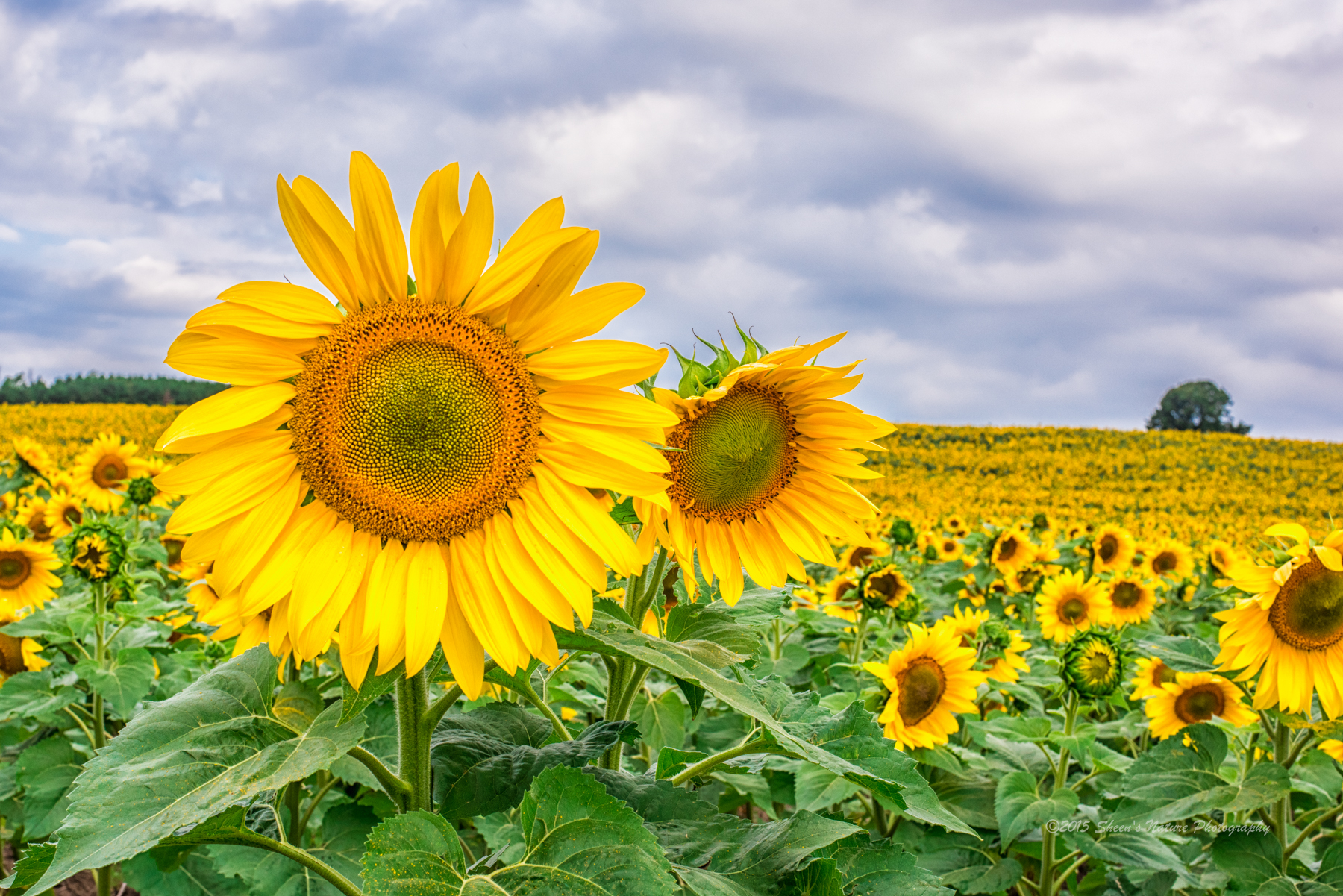
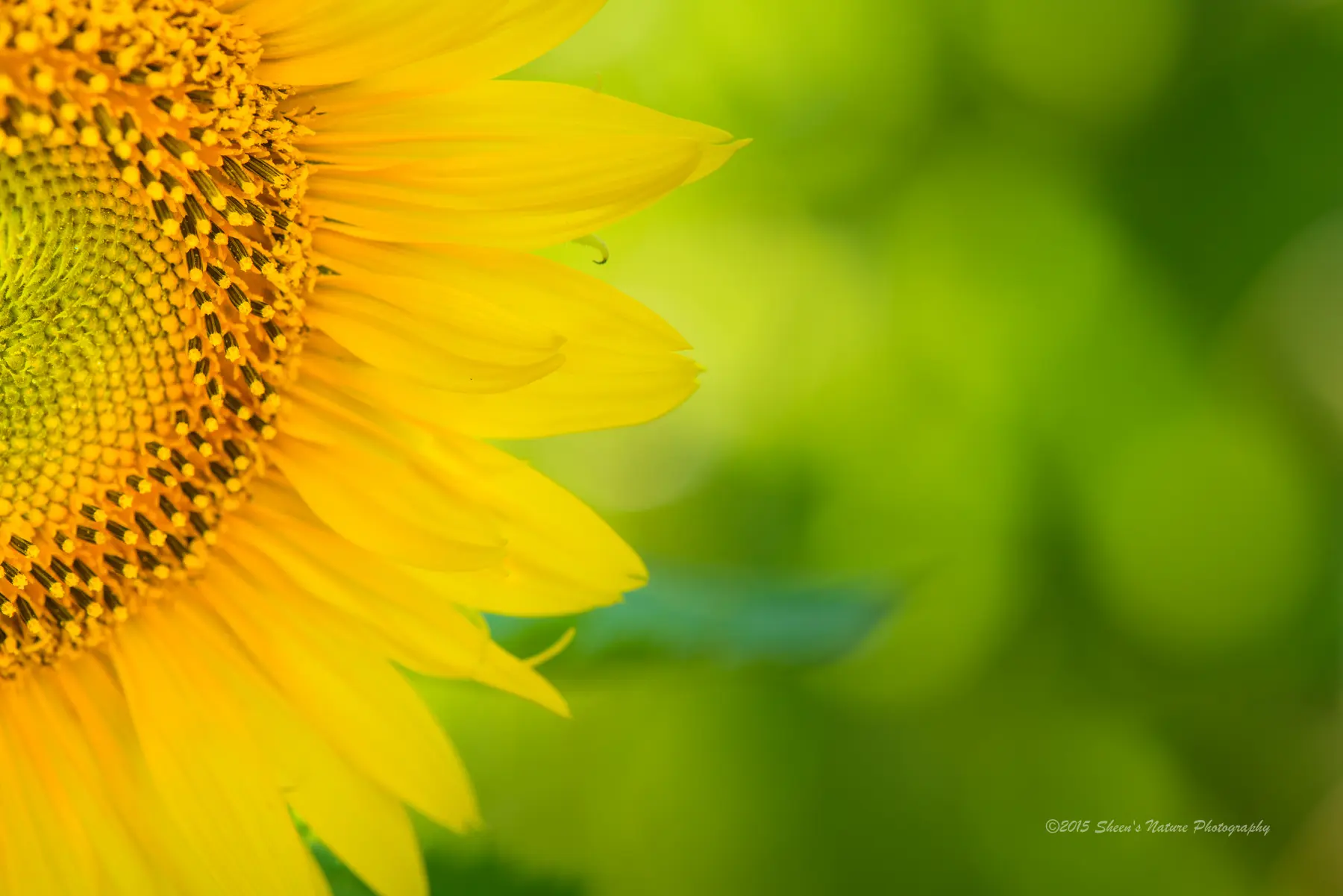
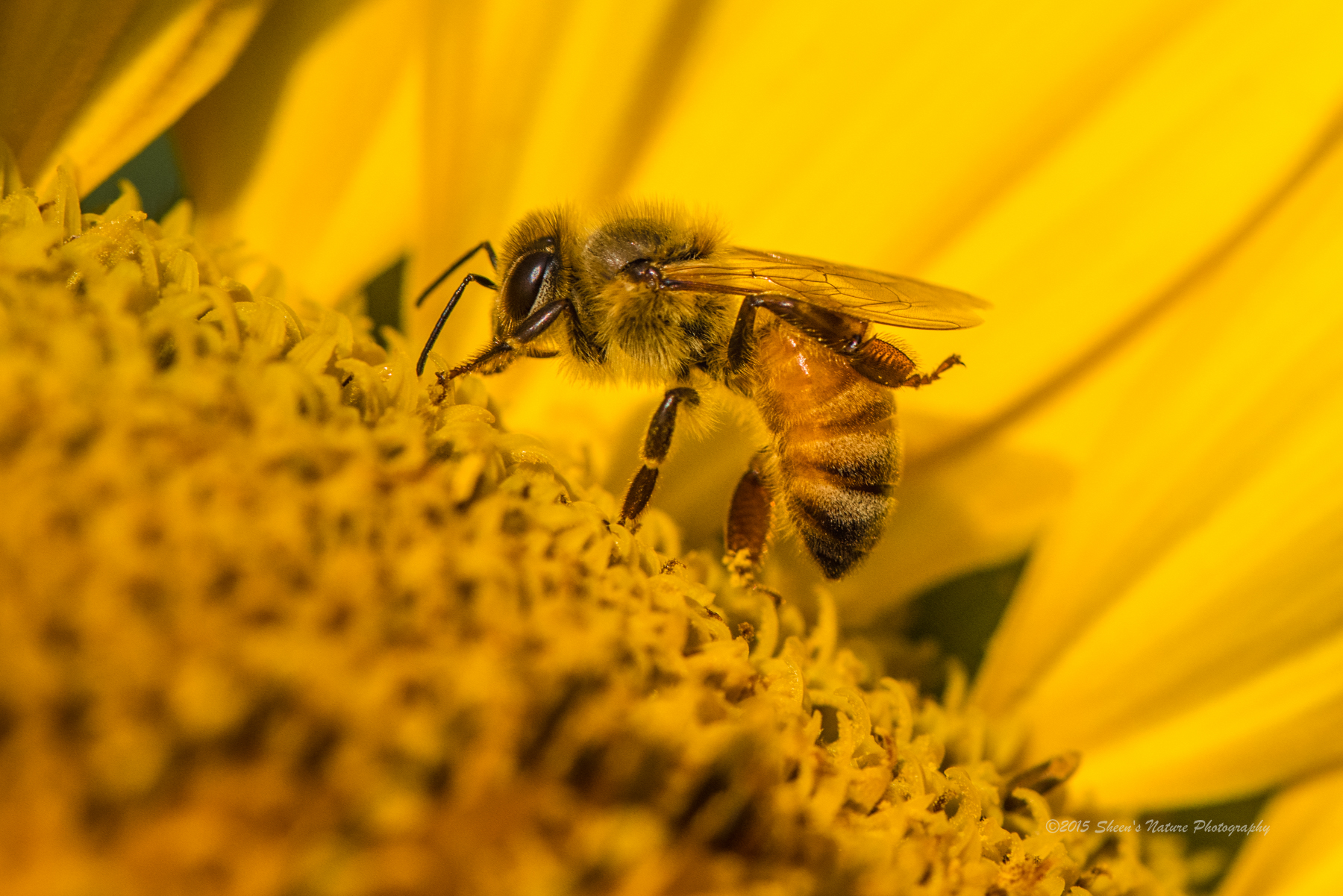
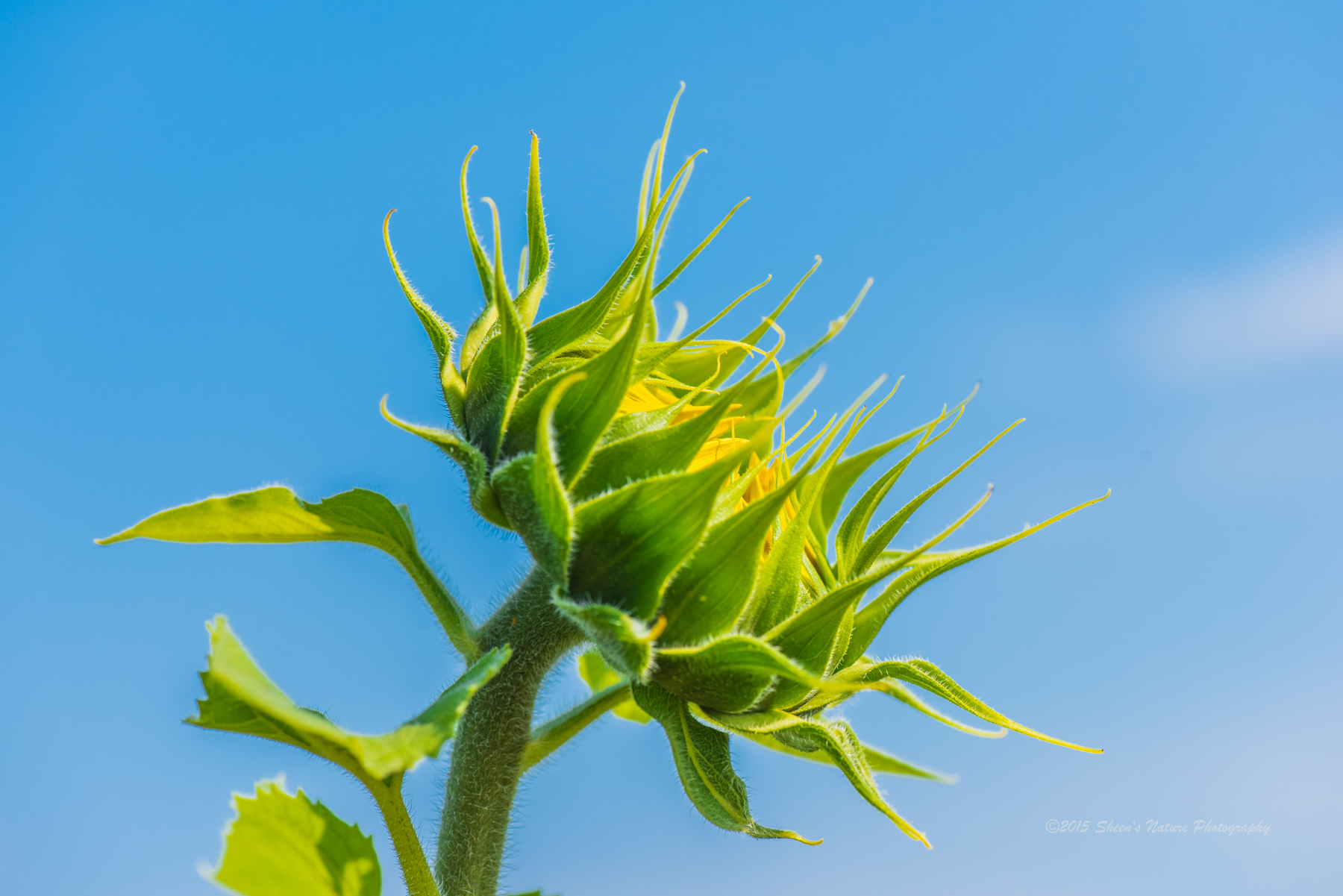
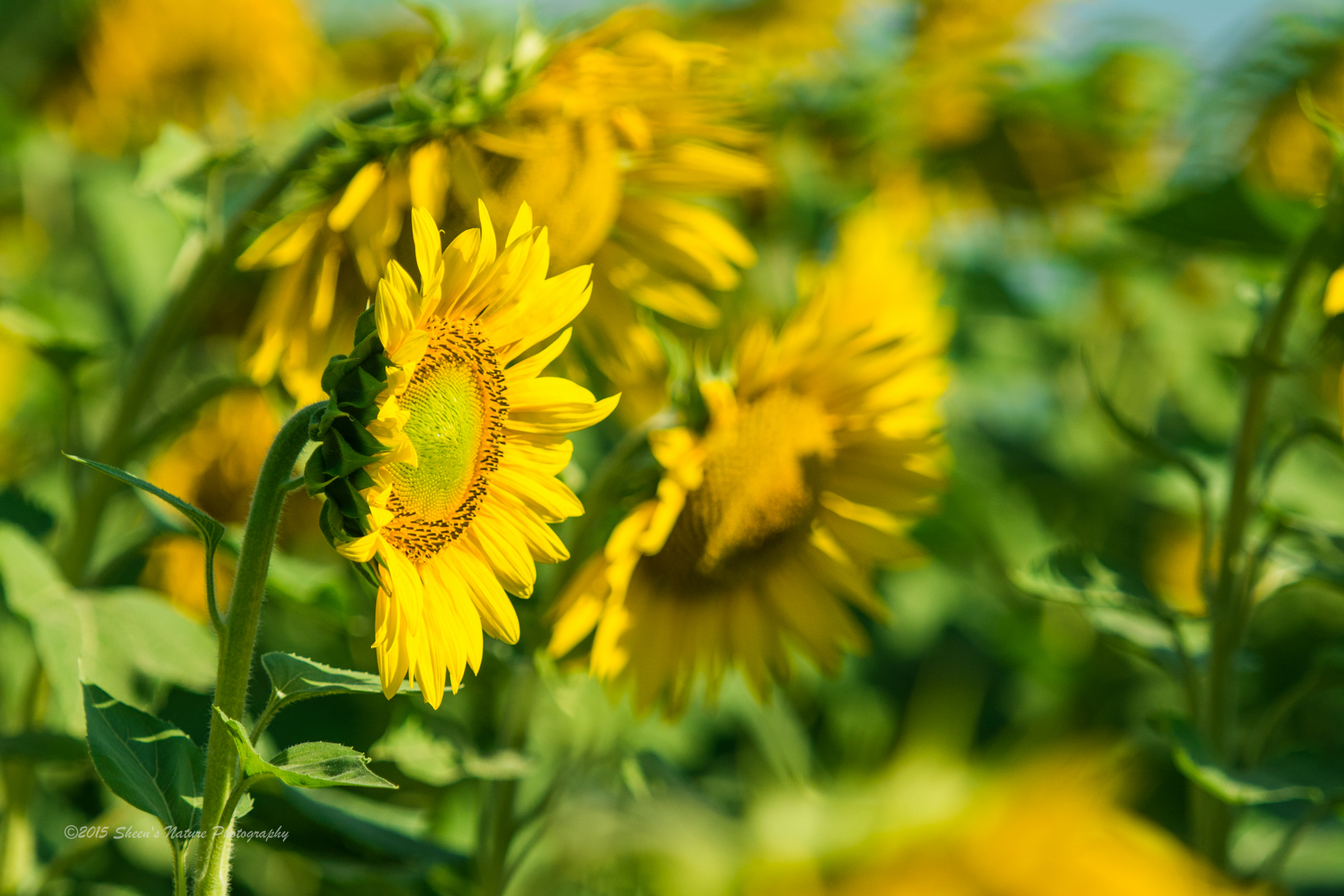
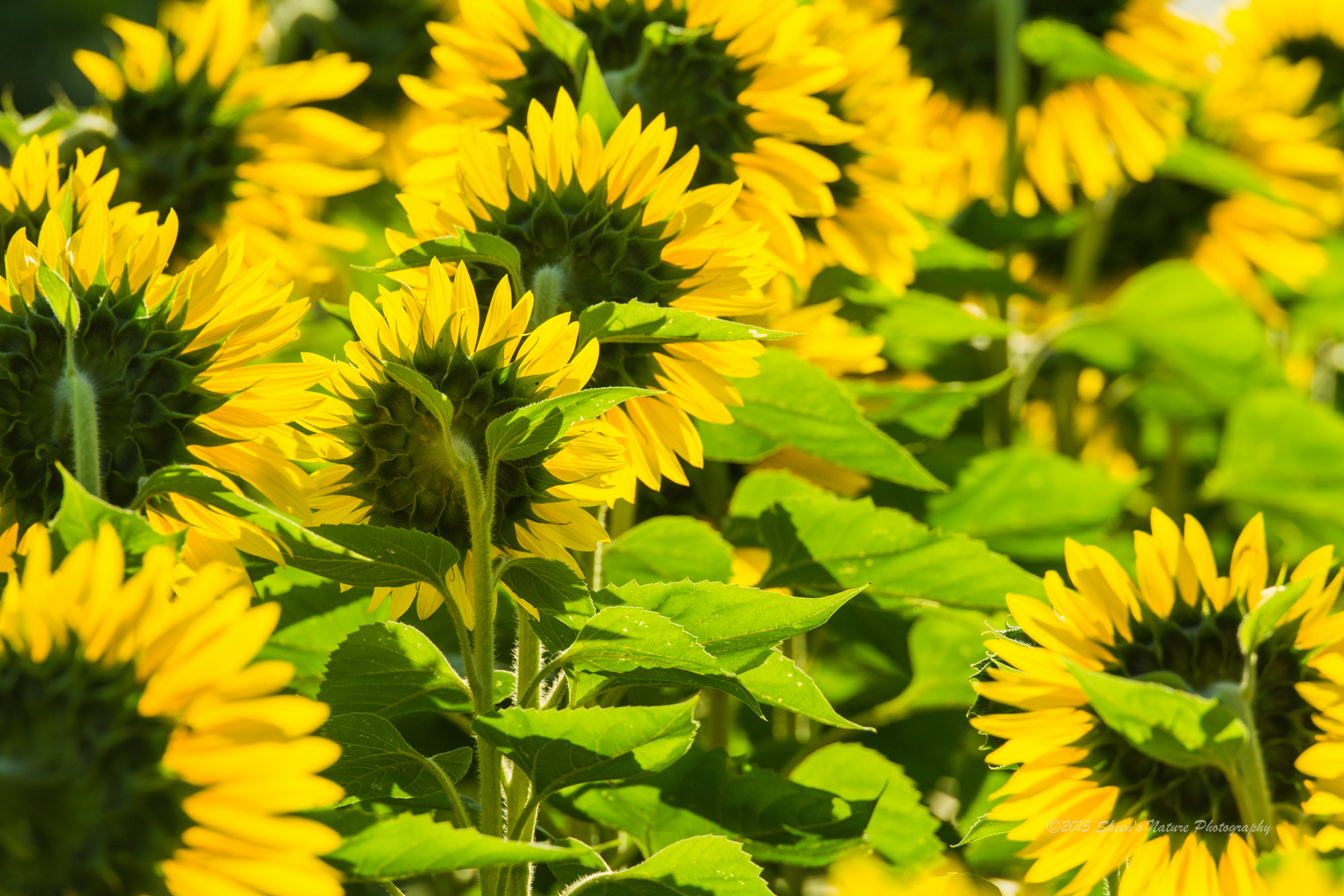
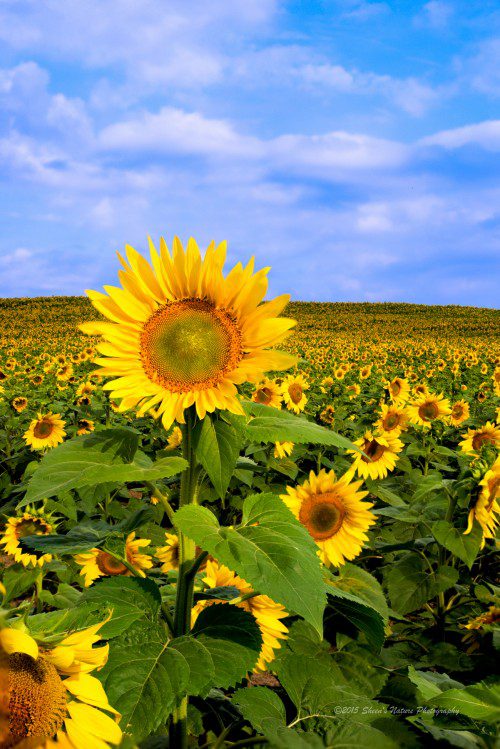




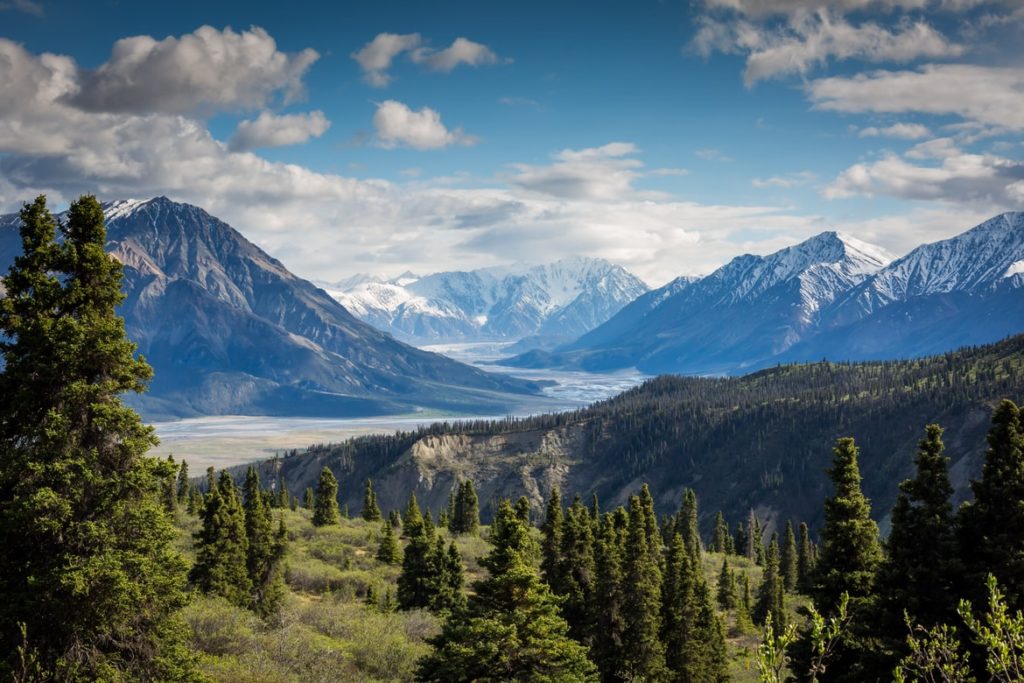
1 Comment
I always do research before and during a shoot. I am currently photographing a feield of sunflowers nearby and found this to be helpful. Thanks. It was the 1st of your articles I’ve seen.